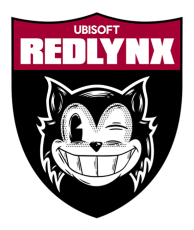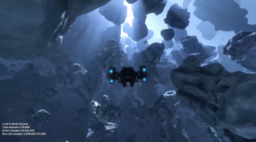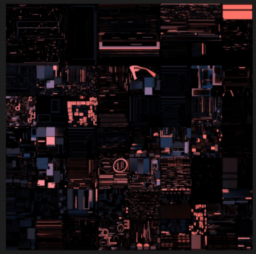- the article presents what kind of artifacts happen when reconstructing normals from world space positions
- suggests how to reduce the artifacts by selecting triangles that are most likely to have originated from the same object
- additionally shows how to use compute shaders and group shared memory to optimize the reconstruction

- the paper presents a method that allows SDFs to be combined with techniques such as linear skinning
- this is achieved by calculating a triangle mesh hull for the SDF, applying the transformation to the hull and using this to trace
- tracing linearly in transformed space follows a non-linear trace in untransformed space

- overview of what has been improved in the latest apple GPU architecture and metal
- sparse textures, what it is, use cases and explanation of how to use it
- rasterization rate maps, mask that allows defining non-linear mapping between virtual and physical render targets
- vertex amplification specifies which vertex calculations can be shared between multiple viewports and which ones are unique per viewport
- better argument buffers, allow access to 500k textures and multiple levels of indirection

- the paper presents a new scheme that allows selectively combining different Monte Carlo rendering algorithms
- allow the use of less computational complex algorithms for more straightforward light transport cases and more sophisticated algorithms for more complicated cases
- enables to reduce the overall amount of noise in the same render time

- the article explains how vertex shaders in “Our Machinery” engine is handled
- all vertex data is explicitly loaded in the vertex shader
- shows how a more flexible skinning variation can be implemented

Ubisoft RedLynx is a multiplatform game development studio located in Helsinki. Along with the hugely popular Trials series, we have developed and published more than 100 games and we are a passionate team of over 140 people of 21 different nationalities. We are seeking an experienced Graphics Programmer to join our core technology team in creating impactful game experiences

Would you like to advertise your job openings here too? More information
- excerpt from the Siggraph talk talk
- overview of the mesh shading demo
- culling implement in task shader
- frustum calling also is done in the meshlet shader stage, since only parts of the model could be visible on screen

- DRED can now include PIX markers
- additional string events can be attached to markers
- debugger extension has been updated to provide access to the information

- the presentation explains how lightmap baking has been implemented in Wicked Engine
- how to ray trace with D3D11 compute and/or pixel shaders
- discusses artifacts, limitations, UV packing, texture formats, and filtering
- the resulting system is an object space shading system

- Metaballs2 demo has been updated
- the demo shows how to use mesh shaders and now provides a compute shader fallback version
- allows switching between both implementations
- compute shaders require extra memory to store intermediate results

Thanks to Jon Greenberg for support of this series.
Would you like to see your name here too? Become a Patreon of this series.

